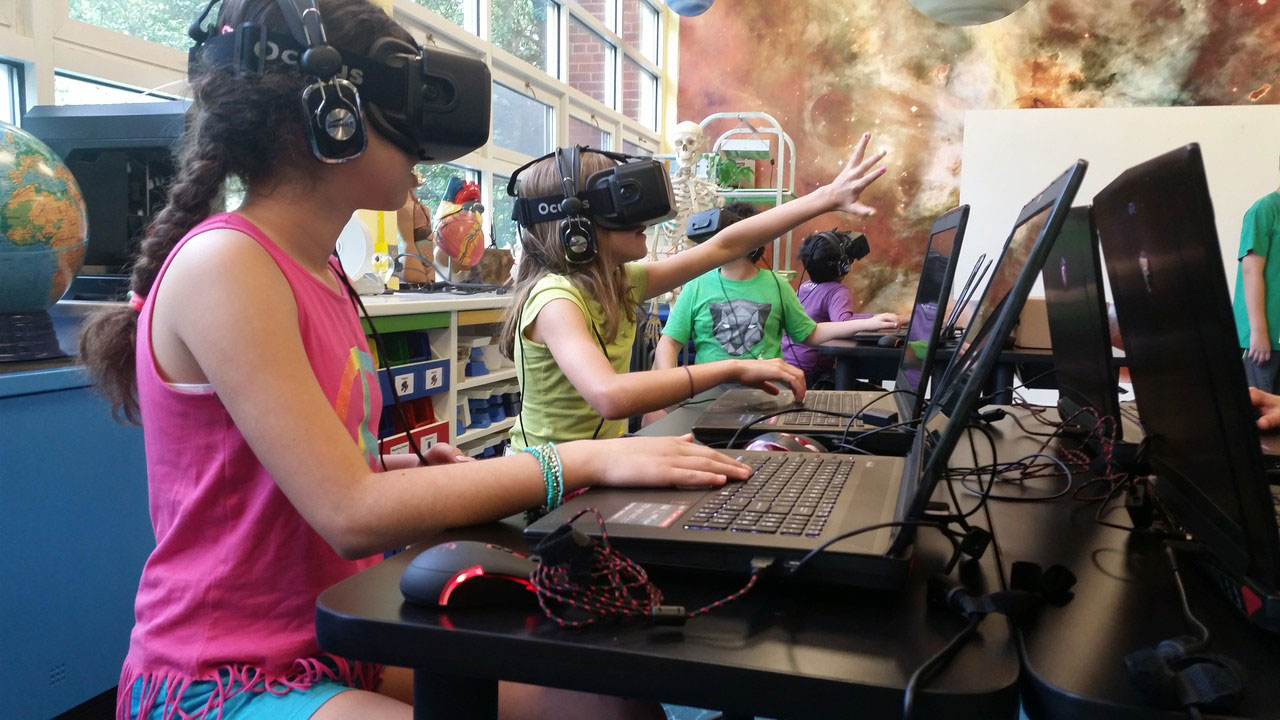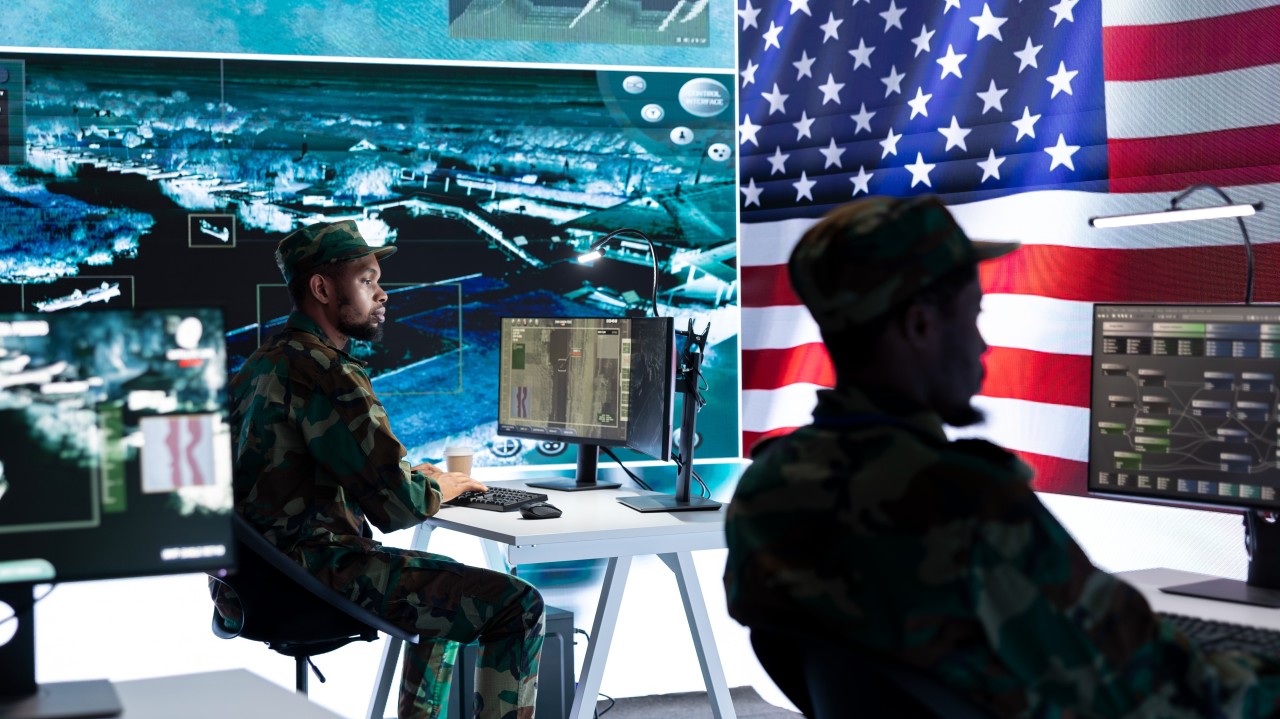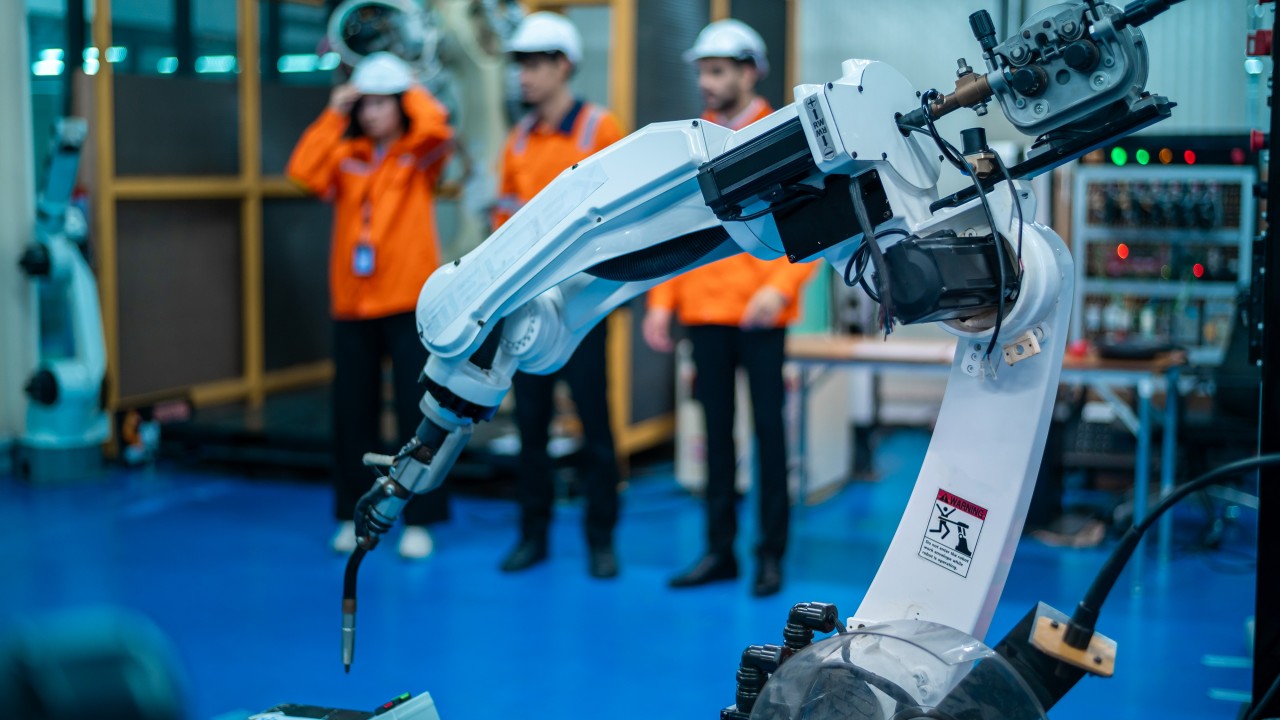
When will Augmented and Virtual Reality be widespread in Schools?
When I was a child my first introduction to a computer was in the school library. Where we were rewarded with time playing Carmen San Diego. We are currently working with VR in a very active way and I envision a time when headsets are improved and deemed appropriate for all ages. I am also excited for my school-aged children to try Virtual Reality (they are already pro’s when it comes to Augmented Reality and test products often!).
We worked on an Augmented Reality National Geographic puzzle and that was the first time that the correlation between Augmented Reality/Virtual Reality and education clicked for me. It was a product meant for consumers but when I tested it at home my children were intrigued by the ability to hover over the puzzle to learn more about the buildings. It added a dimension of learning to what was essentially a puzzle of ancient Egypt.
Being in this industry I take for granted how close I am to new technologies. But when attending consumer trade shows I realize that both augmented and virtual reality is still a new experience for many people. However, it is quickly growing and becoming more mainstream, like smartphones were years back. At the moment, these concepts are mainly used for entertainment, with new video games and devices on the market, like the AR-based game Pokémon Go and the upcoming VR peripheral to the PS4, the Playstation VR. However, there are still a variety of other applications and one of note is the world of education.
Education is often where new technologies are introduced , with computer access starting in every class and now other hardware like smartboards. However, the idea of virtual reality seems like an odd choice for the field of teaching, since the possible applications of it in the learning environment seem limited. After all, what can technology like this do that pen, paper, textbook and computer (via smartboard)cannot?
The answer is a lot. Here are a few examples of how VR and Ar are being used in education today:
inMediaStudio, located in Spain, is one of the companies working on the idea of virtual reality as an instrument for education. They are the creator of the “Immersive Worlds” project, which aims to implement immersive learning into the classroom. One example is of a seabed environment, where students put on virtual reality glasses to observe scenarios chosen by the teacher on tablet. Through the tablet, the teacher can see where everyone is looking, and can see who has seen everything and understood it, and who needs to look back at it again.
Another usage of virtual reality is with use of the Oculus Rift and other VR headsets, used to simulate locations like the Luxor temple. The example with the Temple of Luxor was proposed as an evaluation, of which the student would have to point out the different features of the architecture in real time. Instead of using diagrams and writing down the answers in a standard test, this gives students the ability to show their knowledge through actual application and a more immersive experience, getting to move through a near-realistic replica of the environment.
There are still technological developments that have been created by inMediaStudio that don’t just utilize the concept of virtual reality. An example is “Aula Virtual Santillana”, which is directly translated as “Santillana Virtual Classroom”. It’s a cloud program to create, store, and send assignments, as well as perform other actions like reading digital books. Through use of an NFC reader and “cards” of content, they can connect to the digital content of physical environments, like bookstores and malls, for more material that students can learn from. While not implemented right now, AR compatibility can be utilized for the cards in order to share video and sound using the card that could help teach students.
These are only just a few examples of the ideas that have been used to create a more interactive experience in the teaching world. Though the original question remains, it is much more understandable as to why it is useful, and that’s because it gives students the ability to view the material they are learning in the actual environment, immersing themselves in realistic simulations to gain more a feeling of experience than if one were to just look at a textbook or a film.
Take for example, learning about the pyramids of Egypt. Reading about them in a textbook is one way of learning the information; however, it can be hard for some to learn like this when they aren’t being stimulated in other ways. As well, reading about the experience is not the same as actually experiencing what is being described. You know about the treasures and the tombs inside, and they may describe it well, but there will still be much to be desired by only picturing it in your head or seeing a picture of it, versus actually seeing the treasure directly.
That’s why virtual reality is a great innovation for teaching. It lets you feel as though you actually are in the location instead of being inside the classroom, and this lets you get a better feel for your surroundings. Using the aforementioned pyramids example, with virtual reality, you get the full experience of “travelling” through a pyramid, so you can experience inside and learn about it as you move through the pyramids. The unique architecture, the mysterious treasure inside, all of it is made much clearer when seen directly. The teacher also helps guide the lesson, so they will share all the important points and streamline the learning as if you were writing notes. This makes it easier to learn, and also helps you retain your knowledge better. That’s not to mention all the other applications possible, like interactive evaluation, which can keep VR technology running a lot more in the classroom.
Overall, virtual reality looks like it could be on its way to being integrated into the everyday class, which can be quite beneficial for the students. With a brand new way of learning, this will hopefully improve the learning environment as a whole, and integrate students into the new and ever-expanding world of the virtual environment.
To discuss more about the possibilities of VR and AR in the classroom feel free to contact me. I am happy to discuss with educators and to learn more!





